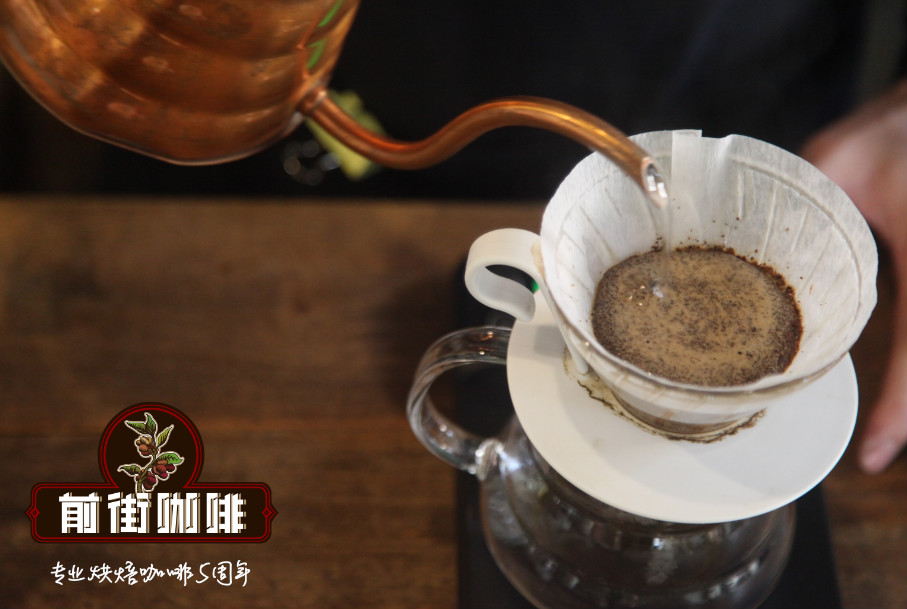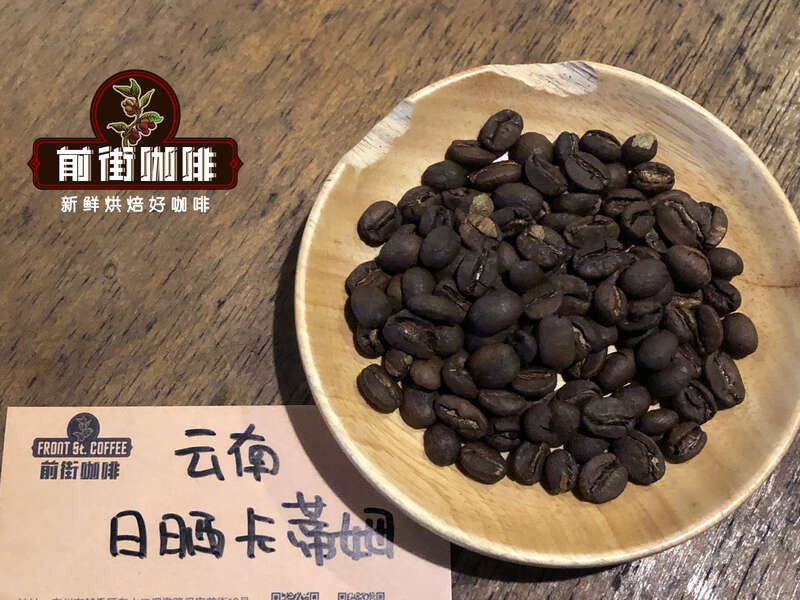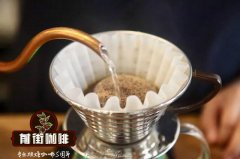What's the difference between hala mocha and yemeni mocha? What baking level is halamocha suitable for?

Professional coffee knowledge exchange more coffee bean information please follow the coffee workshop (Wechat official account cafe_style)
Ethiopia is the country where coffee was first discovered. Today, there is still a lot of wild coffee picked and used by farmers in the virgin forest. Ethiopia is a country with poverty, drought and civil war. However, it is still the most important coffee producer in terms of coffee quality and output.
Ethiopian coffee can be divided into two treatments. Natural washing treatment II. Natural sun treatment. Nowadays, every cooperative or even a small coffee farm in Ethiopia produces coffee beans of the above two treatments at the same time, such as the well-known Yegashev or Sidamo province.
Ethiopia is currently the country with the fastest production and development of coffee. Different producing areas not only make coffee different in terms of treatment, but also make aroma and taste different due to different processing methods, which often give people the wrong impression. For example, the aroma of Yegashev's sun-dried beans is different from that of Sidamo's sun-dried beans. Yegashev's sun-dried beans have a higher moisture content, coffee beans account for the majority of small grains, the aroma is low and stable, and the taste is thicker. The strong strawberry aroma of the sun beans in Sidamo is impressive, but the taste is thin.
Harrar is the most important sun bean producing area in Ethiopia. Since the emergence of many amazing small estates in Sidamo in 2008, Harari beans seem to have disappeared in the coffee market, and people have lost confidence in Halamoka. Negative comments such as lack of aroma, lack of wild and changeable aroma, and lack of obvious characteristics have followed. However, after a while coffee fans will still miss their first lover with a low-key but fermented blueberry wine and unpredictable aroma.
Hara sun-dried beans are long rice-shaped, with different sizes, colors and moisture content, and some lack corners and irregular beans, which is the source of Hara's strong, strange and complex flavor.
Shallow baking City (fragrance): deep and fermented blueberry fragrance, this baking stage can make the most different changes. You can make the acerbity of red wine become particularly prominent and rough 10 seconds earlier, 20 seconds earlier, and it can also make the sour decoration become mild and smooth, with cheese unusual game most attractive, which reminds people of a lot of flavors but not in place. This is interesting, and the fragrance of aftertaste is very conspicuous. It's great to take a sip of coffee, seal the mouth of the cup with your hand for a few seconds and inhale a full cup of flowers.
Re-baking (general C): the main reason for doing this baking degree is to get the aroma of cocoa chocolate, the sweetness of caramel cake, mellow, round and pure taste, coffee brewing to spread the aroma of chocolate to enjoy the atmosphere of sweet, coffee cooled and slowly taste chocolate soft and mellow.
It is also located on the Arabian Peninsula of the Asian continent, but it is very close to the African continent just across the Red Sea and the Gulf of Aden Gulf of Aden, but other Arab countries do not produce coffee, so the world classifies Yemeni coffee as a member of North African coffee. So what is the Yemeni mocha? Mocha is the export port of Yemeni coffee, because it is difficult to name all the tiny sub-producing areas in the history of coffee trade, even though the coffee produced by these small producing areas is very good, so they have to use the name of the place of export. the sun beans nearby, including East Africa, were exported from the port of Mocha to all parts of the world in the early days, and now the port of Mocha has long been silted up and disappeared. Many Ethiopian sun beans also name themselves mocha, such as Haramoka, which we know well. I think this is because its flavor has a little bit in common with Yemeni coffee.
Yemen is probably the first country in the world to use coffee as a cash crop. Legend has it that it was brought in by Muslim Sufi pilgrims from Ethiopia in the 6th century. Yemeni exporters never buy directly from the farm. Instead, they buy from the big market dealers in the middle. The coffee received by the local market passageway is with pods and is usually stored in a cool cellar. The special flavor of the world's favorite Yemeni coffee may come from their ancient way of trade, and farmers have not suffered from the way they trade through the market. The main reason is that the local planting land is limited, coupled with high latitudes and limited water resources, the output is very scarce, and the demand is very high, keeping the price high.
The most correct spelling of mocha should be Al-Mahka, which is the Arabic spelling, but in the end, what you see on the sack is the correct spelling of Mocca or Mocha, regardless of some naming and spelling trivialities, Yemeni coffee is the most unique and expensive coffee in the world, the overall style is [wild] or [natural] and the complexity is extremely high, for some people it is spicy, but you must try it sometime anyway. You will find that you like this unique coffee very much, and if you also fall in love with him deeply, it will be the beginning of a new coffee journey.
Yemeni coffee is not easy to grow and harvest. Most farmland also grow Qat katgrass, which is said to have a mild and refreshing effect. This plant will absorb water from the ground and destroy the underground aquifer. Planting coffee is different. I hope that some changes can be made to make farmers stop planting katgrass. Yemen Harasi Harari is a small producer of coffee. Coffee is grown on terraces, and there is no data to verify the wild species. What's so special about this bean? If you expect him to be very miscellaneous and earthy, you may think it's great that Harasi Harari is different from Haimi, Saab, Supreme and other clean coffee, which is the same tone as Eshmael and Sonani, and the dirt is dirty with a fleshy flavor.
END
Important Notice :
前街咖啡 FrontStreet Coffee has moved to new addredd:
FrontStreet Coffee Address: 315,Donghua East Road,GuangZhou
Tel:020 38364473
- Prev

Introduction of Yunnan Baoshan Katim Coffee varieties description of Katim brewing flavor of Yunnan red cherry in the sun
Katim, as a variety that has taken root in Yunnan, I love and hate it. Although it has many shortcomings and is not suitable for planting at high altitude at all, there is still a lot of room for improvement and it has become better and better. How to find more of its advantages and make use of it is the most important. In the popular domestic circle of shallow baking in pursuit of sour aroma and sweet taste.
- Next

Eunica Manor in El Salvador introduces the roasting degree suitable for El Salvador bourbon coffee.
For more information on coffee beans, please follow the Coffee Workshop (official Wechat account cafe_style) El Salvador, the smallest and most densely populated country in Central America, has been growing coffee since 1740 according to relevant literature. The land area of growing coffee accounts for about 8% of the country. Dazhi is divided into five main producing areas, namely Apaneca and Central Be.
Related
- Detailed explanation of Jadeite planting Land in Panamanian Jadeite Manor introduction to the grading system of Jadeite competitive bidding, Red bid, Green bid and Rose Summer
- Story of Coffee planting in Brenka region of Costa Rica Stonehenge Manor anaerobic heavy honey treatment of flavor mouth
- What's on the barrel of Blue Mountain Coffee beans?
- Can American coffee also pull flowers? How to use hot American style to pull out a good-looking pattern?
- Can you make a cold extract with coffee beans? What is the right proportion for cold-extracted coffee formula?
- Indonesian PWN Gold Mandrine Coffee Origin Features Flavor How to Chong? Mandolin coffee is American.
- A brief introduction to the flavor characteristics of Brazilian yellow bourbon coffee beans
- What is the effect of different water quality on the flavor of cold-extracted coffee? What kind of water is best for brewing coffee?
- Why do you think of Rose Summer whenever you mention Panamanian coffee?
- Introduction to the characteristics of authentic blue mountain coffee bean producing areas? What is the CIB Coffee Authority in Jamaica?

